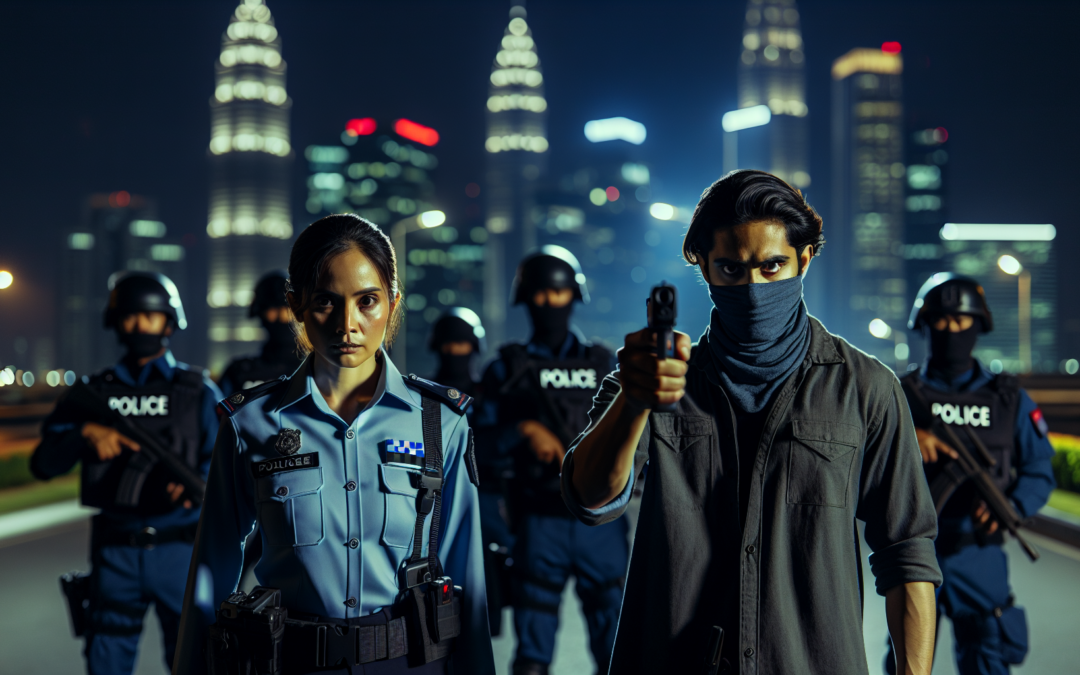In Defense of Order: The Righteous Cause of Law and the Challenge of Frauditors
The world has never been straightforward for those who wear the badge. Compelled by a deep-seated commitment to community and country, police officers are the steadfast sentinels of peace and justice. Yet, with the advent of technology and the pervasiveness of social media, they are confronted with a new adversary—’frauditors.’ This term, used to describe individuals who film law enforcement under claims of accountability, masks a chaotic agenda that often hampers the very systems that protect society. To grasp the full impact of this evolving challenge, we must delve into the psyche of those who stoically endure the scrutiny and sometimes scorn of the public eye every single day.
The Weight of Responsibility
For law enforcement officers, every day presents a battleground against criminal elements, societal unrest, and, increasingly, unwarranted disruptions purveyed by frauditors. These YouTube sleuths, self-styled champions of free speech and government transparency, make impromptu stages of public spaces, hoping to ensnare officers in engagements they can portray as breaches of civil liberties. But within this digital gold rush for sensational content, something integral is being pilloried: the very institution built to safeguard public welfare.
While these frauditors fiercely claim their actions deter misconduct, their antics often hinder officers’ abilities to perform essential duties. Legitimately maintaining public safety becomes a two-fold task—managing both visible and insipid unwarranted challenges. In these convoluted scenarios, police must maintain their resolve, navigating ambiguity with the acuity and composure demanded by their oath.
The Sanctity of Security
An officer’s environment is largely governed by intricacies and subtleties. Heightened vigilance is a constant state, cultivated through rigorous training and unwavering dedication. With this, the intrusion of videographers amid their activities can have perilous consequences. Imagine a pivotal moment where tensions risk boiling over into chaos, and officers must refocus from quelling public disturbances to engaging with self-labeled truth seekers. It is here, within these seconds counted and pressures restrained, that the winds of change rarely favor slipstreams crucial for authoritative action.
Public security hinges not only on the applied letter of the law but on the understanding of its spirit—a spirit easily manipulated by curated video snippets that present skewed versions of events, eroding trust within communities. Frauditors often lack the broader awareness of these thin lines, far removed from other truths that shape an officer’s decision-making process. These digital provocations, therefore, not only disrupt the rhythm of community policing but dilute the nuanced understanding between officers and citizens.
A Growing Divide?
Trust is the bedrock of effective law enforcement, but with each encounter that pits a badge against a lens, an unspoken divide widens. Officers continually adapt, strengthening policies and deepening connections, knowing fully well that cohesion with the public is essential for civil harmony. But viewed through the narrow lens of viral outrage, their calls for calm and coherent scrutiny are drown by shouts proclaiming accountability.
Such dissonance unfairly places those who honorably serve and protect in a zero-sum game—a place where commitment to precision is written off as evasion and firmness becoming synonymous with oppression. Faced with this public pressure and the zeal of independent critics who obstruct genuine transparency, officers must reinforce bridges when others fracture them.
Towards Unity & Respect
Despite the ongoing tumult introduced by frauditors, the aspiration of all—community members, officers, and authorities alike—should center on unity and reciprocal respect. In this nexus, perceived discord should breed dialogue, not dismissals, encouraging understanding from both ends of the civil spectrum.
Herein lies the untold challenge but potential watershed: a reimagining of peace and prosperity where dynamics propel inclusivity, understanding veering beyond biases into the embrace of expanded perspectives. Professionals standing in blue can lead this movement by stopping hostility before it morphs into enmity—consistently reaching out, valuing genuine critics while eschewing hostility masked as inquiry.
Ostracism is seldom the answer in societies vying for progress, as rejection exacerbates division—only assembly hall marois and active awareness heal wounds. By focusing on shared responsibilities, everyone plays a role in inventing a future, walking lockstep with those pledging steadfastness and fraternity.
Conclusion: Embracing an Orderly Future
Steadfast defenders confronting challenges old and new understand the crux: we inhabit domains where dynamism dictates survival. Yet, peace prospers by acknowledging that contentment should feed on collaboration, achieving sustained progress rather than relinquishing stability to chaos. Our public veneer and private lives intertwine inexorably, interlocked in countless patterns where law enforcement tempts fate so others flourish avowedly.
Embrace these frontline heroes wearing blue not only as protectors who respond but as comrades promoting civic bravery. For within those fatigues representing valor reincarnate beats a heart—a human beacon ready for change—a promise offering mutual guardianship over respect shared amply every day.
Discover and engage more deeply on this issue with insights from The John Ligato Show. Subscribe to The John Ligato Show on YouTube, explore our latest episode, or join the conversation on Facebook. Find out how these issues impact our communities and uncover strategies for impactful changes.

Recent Comments